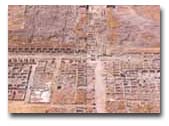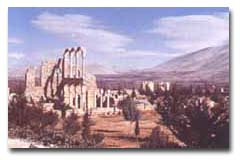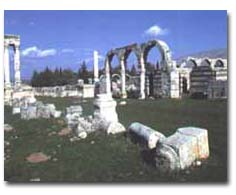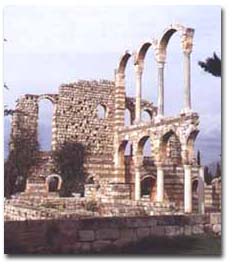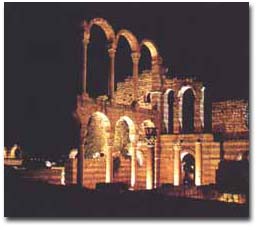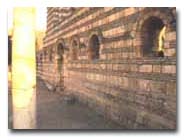|
Lebanon’s other sites were founded millennia ago, but Aanjar is a relative new-comer, going back to the early 8th century A.D. Unlike Tyre and Byblos, which claim habitation since the day they were founded, Aanjar flourished for only a few decades. Other than a small Umayyad mosque in Baalbeck, we have few other remnants from this important period of Arab history. Aanjar also stands unique as the only historical example of an inland commercial center. The city benefited from its strategic position on intersecting trade routes leading to Damascus, Homs, and Baalbeck and to the south. This almost perfect quadrilateral of ruins lies in the midst of some of the richest agricultural land in Lebanon. It is only a short distance from gushing springs and one of the important sources of the Litani River. Today’s name, Anjar comes from the Arabic Ain Gerrha, “the source of Gerrha” the name of an ancient city founded in this area during Hellenistic times. |
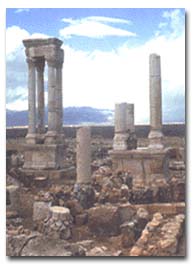
The Tetrapylon, a monumental entrance with four gates. |
